OUR CHIROPRACTORS AT CHIROPRACTIC PARTNERS
PROVIDE PAIN RELIEF FOR BACK & NECK PAIN, HEADACHES, SCIATICA, INJURIES AND MORE!
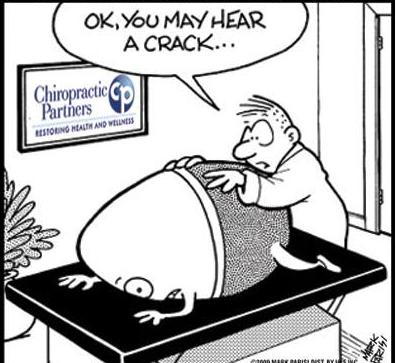
- posted: Oct. 28, 2019
It's time to rethink your approach to low back pain with chiropractic care from Chiropractic Partners!
At some point in our lives it’s expected that all of us will experience back pain. It’s almost accepted as a fact of life by many. Back pain is the leading cause of disability around the world, with 50% of American workers reported having experienced low back pain, as much as 80% the worlds population reporting the same.
Low back pain can present symptoms in so many different ways that it’s almost as unique as the individual. For the sake of simplicity we can categorize them as: muscle strain, facet irritation, SI joint sprain, disc herniation, and sciatica.
Muscle Strain: Muscle strain is one of the more common injuries that can lead to back pain, and is not considered a serious condition (even though it may feel like one)! Commonly these occur during exercise or other physical activity and have a very good prognosis. At a chiropractors office muscle strains can be helped with the adjustment, stretching, soft tissue therapies, and ice packs. Other management would be prescription muscle relaxers and NSAID medications, like ibuprofen.
Facet Joint Irritation: This is another very common and, thankfully, not serious condition. When you involve a joint in an injury it makes things more complicated. Picture your facet joints like two dinner plates stacked on top of each other that slide back and forth over each other. When the ligaments around that joint become irritated the brain reacts by tightening the muscles in your back to stop movement at that joint. However, that lack of movement designed to protect the joint also stops the joint from preforming the movement necessary to push out that inflammation. This is where the adjustment comes in, to get those joints moving again, speeding up the healing process and helping to reduce pain.
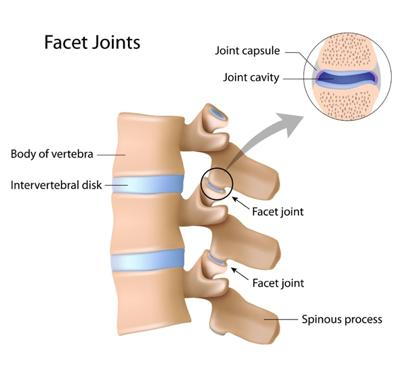
Sacro-Iliac Joint Sprain: If you picture a pelvis and imagine (I mean REALLY imagine) that it resembles an elephants head. The elephants face is the sacrum bone, and the ears each represent an ilium, then the sacro-iliac joint is where one ear meets the elephants face.
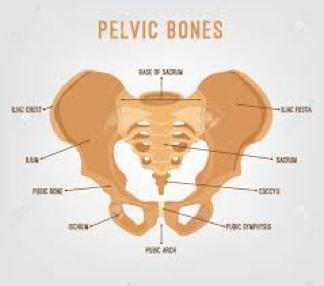
That joint is similar in kind to the facet joints because it’s also two essentially flat surfaces that glide against each other. It’s a very subtle movement, but it’s crucial to proper lower back and even hip movement. If that joint is locked up it can cause a lot of pain, which is why a chiropractic manipulation is so effective. Other treatments like NSAIDs and stretches can help temporarily, but until that joint is moving properly again those treatments tend to be just band aids.
Disc Herniation: Before we get too deep, I’d like to dispel a common misunderstanding. There’s no such thing as a “slipped disc”, as if it slid out between your vertebral bones like a sports car on a wet road. The disc has two main parts, the nucleus (the ball deep in center of the disc) and the annulus (tough collagen surrounding the disc, providing shape and strong connection to the vertebral bones). A herniation can be as little as a bit of the annulus material pushing against (but not breaking through) the annulus ALL the way to the extreme of the annulus material being pushed out into the spine. Here’s the kicker: sometimes people have a bad herniation and don’t know it. Some people have a very tiny herniation that causes excruciating pain. It’s really all the luck (or un-luck) of if that annulus material hits surrounding nerves or not. When it does it can often resent as that pain that will go all the way down to your toes. This is actually handy because doctors can figure out not on where a disc is herniated but also in which direction it has herniated by which toes have pain/tingling/numbness. Here’s the good news, most disc herniations will resolve on their own over time. Chiropractors can help your bodies process of sucking those materials back in and patch up by facilitating proper movement through adjustments, exercises, and distraction techniques.
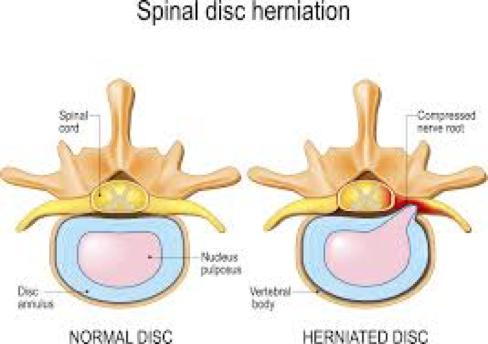
Sciatica: Finally we have the King of nerve entrapments. Sciatica is often blamed for any kind of shooting or radiating pain down the leg, but from a clinical perspective for us doctors it is specifically pain going down the back of the leg, and even into the feet and toes. The piece of anatomy in question is the sciatic nerve which is actually a collection of nearly half a dozen nerves out of your spine that all bind together to travel as one big unit, which is why some disc herniations cause sciatica. This hulk of a nerve passes under the piriformis muscle, which when tight can compress that nerve. In some unlucky individuals the sciatic can actual pass THROUGH the different fibers of the piriformis. Chiropractic adjustments can help sciatica, especially if it comes from the low back. However, if it’s truly from the piriformis muscle your chiropractor will release that muscle and give you stretches to help.
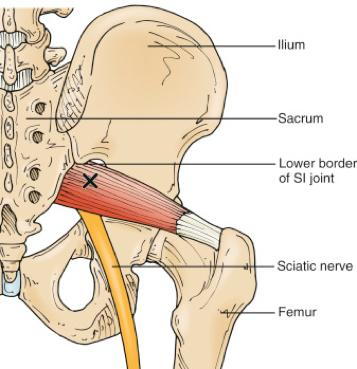
When Should You Worry?
Only a relatively small percentage of low back pain are truly pathological in nature and are of truly insidious origin, but there are a few things that warrant a trip straight to your chiropractor:
- Numbness
- Tingling
- Weakness
- Temperature changes
- Inability to walk
- Following a fall, car accident, or other trauma
- Low back pain with neck pain and fever
- Changes in bathroom habits*
*If you experience changes in bowel or urinary function after onset of lower back pain, it is appropriate to seek out emergency medical attention as this could be a sign of a more serious medical condition.
When Does Chiropractic NOT help?
At Chiropractic Partners we strive to treat our patients with the upmost respect, and that includes being honest about when we AREN’T the best place for them to be. In some cases there may be other options better suited for a specific patient with a specific condition. These can include:
Strengthening and Exercise- sometimes physical therapy is needed to improve a patients function and strength beyond what traditional manual techniques can provide.Surgical Interventions- there are instances where degenerative changes, whether from age or trauma, are too much for conservative care.Severe Neurological Issues- some non-traditional chiropractors specialize in functional neurology, but in rare cases a minimum of comanaging with a Neurologist is the best course of action.
What Can You Do In The Meantime?
We’ve all heard the term “placebo”, meaning that a person is getting better because they THINK they’re getting better; but not everyone has heard of “nocebo” which means the exact opposite: people WON’T get better because they think they won’t. There’s been a big shift in the world of pain science and a new focus on the huge impact that mental and emotional factors can play into your experience of pain. As clinicians, we do our best to give our honest prognosis of any condition, but also to empower patients to face any challenges to come, and to avoid any self-sabotage. Some things you, as a patient, can be aware of to try to avoid are:
- Anticipating Pain: sometimes the fear of experiencing pain can make that pain worse, and the anticipation might be worse than the pain itself! To give an example, when a small child is getting a shot are they crying because of the pain of the needle? No! They cry before the needle even touches them because they’re scared of the scary stranger in a white coat and gloves that’s coming at them.
- Catastrophizing: for some people the thought of the consequences of their pain or injury come crashing into their minds like a bull in a china shop. The fact that they now ruminating about difficulty sleeping, the multiple doctors appointments to come, and the time they’ll have to take off work (and the accompanying financial strain) are factors that can but a multiplier on the physical pain.
We truly hope the information here has been useful, and that if you were on the fence that it helped answer some question you may have had. Chiropractic Partners has 11 locations located throughout the triangle; including Fuquay, Cary, Clayton, Durham, Chapel Hill, Raleigh, and Wake Forest. Every Chiropractic Partners doctor is well screened and hand selected by current practice members to ensure the best quality care for patients, which is why we’re also the treating chiropractors for North Carolina State Athletics! If you or a loved one is experiencing low back pain, please don’t hesitate to reach out for a free consultation.
Sincerely,
Chiropractic Partners of North Raleigh
References:
- Hoy D, March L, Brooks P, et al The global burden of low back pain: estimates from the Global Burden of Disease 2010 study Annals of the Rheumatic Diseases Published Online First: 24 March 2014. doi: 10.1136/annrheumdis-2013-204428
- Vallfors B. Acute, Subacute and Chronic Low Back Pain: Clinical Symptoms, Absenteeism and Working Environment. Scan J Rehab Med Suppl 1985; 11: 1-98.
- Hartvigsen J et al. Low Back Pain Series: What Low Back Pain Is and Why We Need to Pay Attention. Lancet, June 2018; Volume 391, Issue 10137; p2356-2367
- Bronfort G, Haas M, Evans R, et al. Evidence-informed management of chronic low back pain with spinal manipulation and mobilization. Spine. 2008;8(1)213-225
- Chiu, C.-C., Chuang, T.-Y., Chang, K.-H., Wu, C.-H., Lin, P.-W., & Hsu, W.-Y. (2015, February). The probability of spontaneous regression of lumbar herniated disc: a systematic review. Retrieved from https://www.ncbi.nlm.nih.gov/pubmed/25009200.

